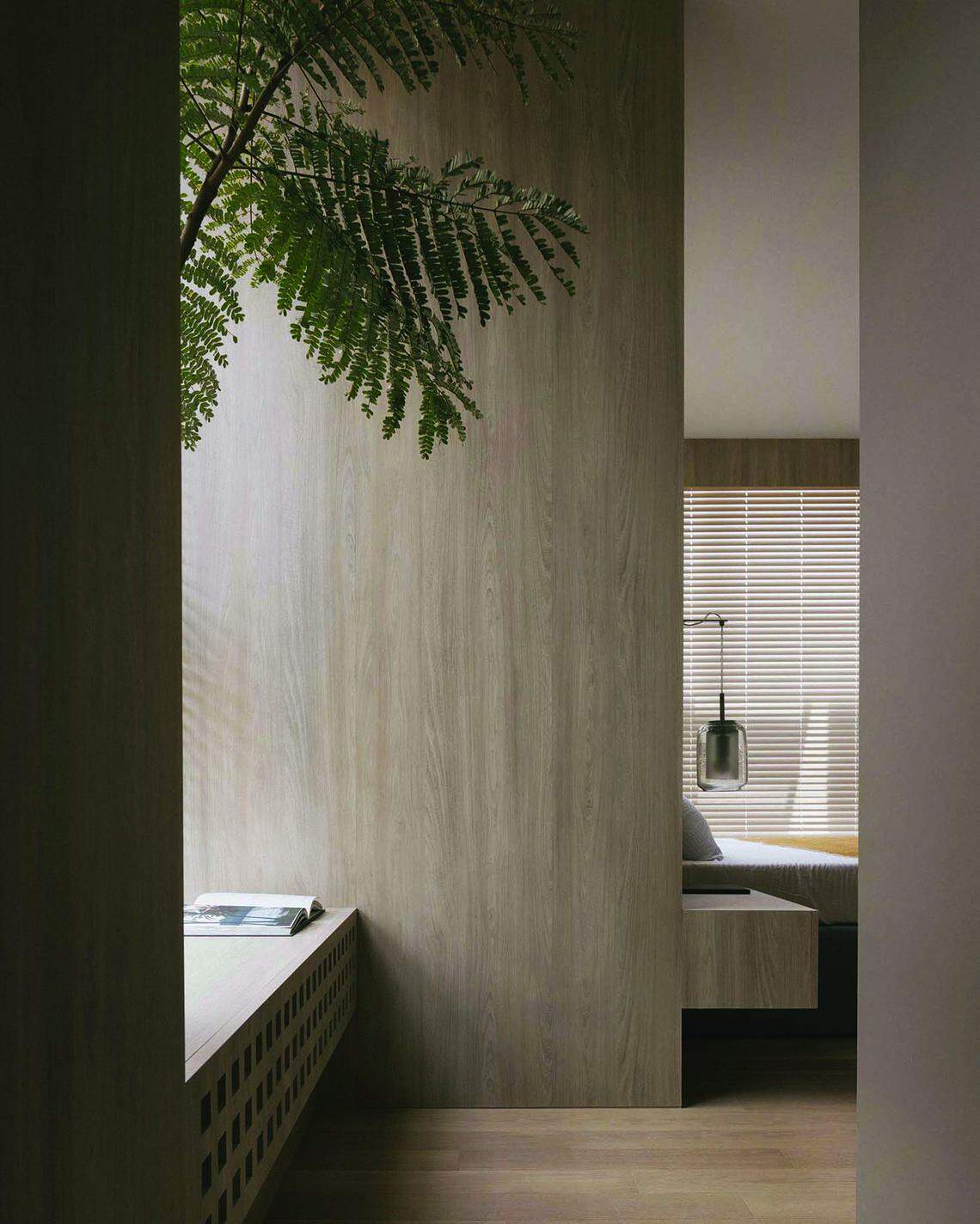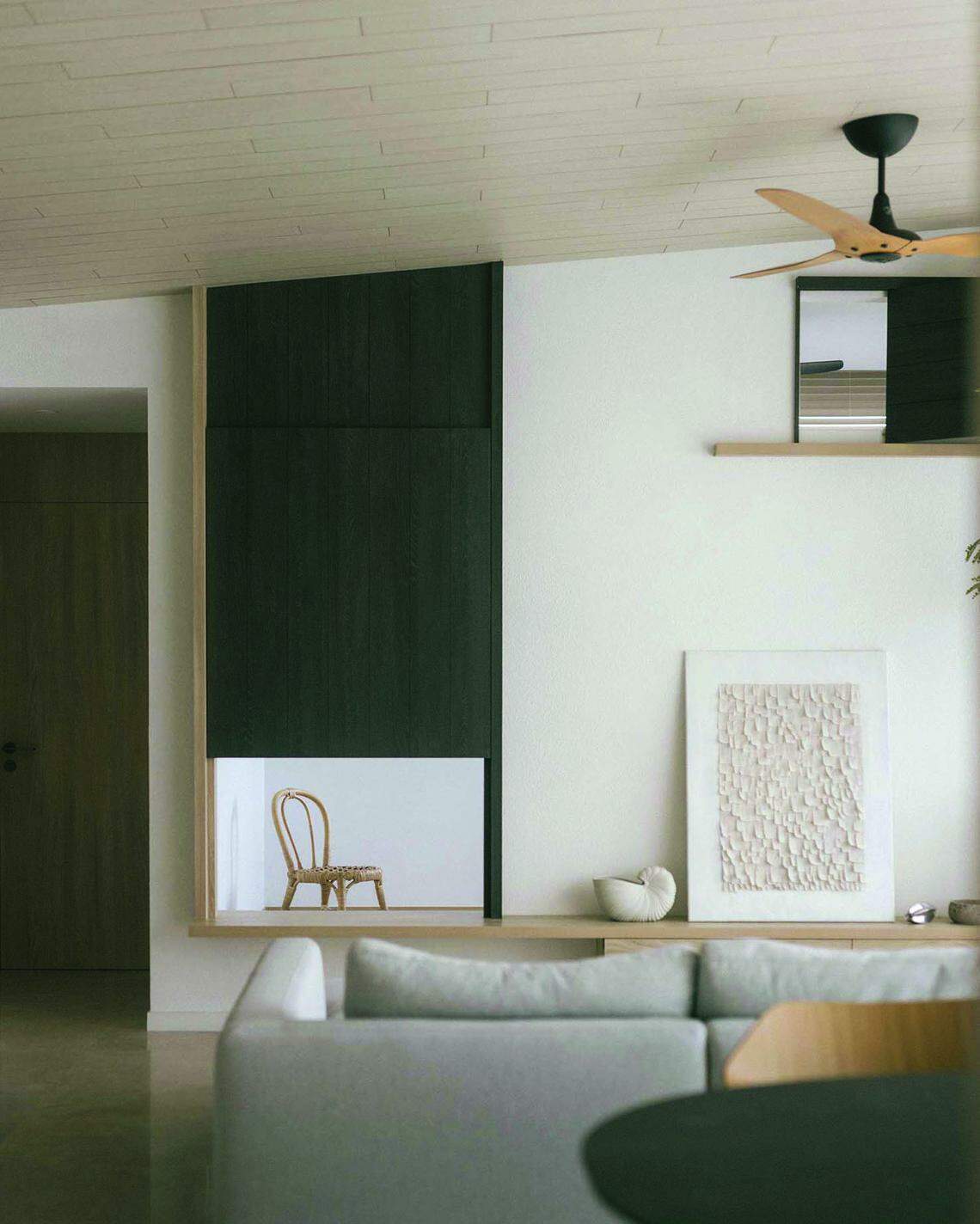SINGAPORE – This 1,658 sq ft four-bedroom apartment at Paterson Residence in the Orchard area is a matrimonial home belonging to a couple in their 30s, who work in finance and tech.
In their brief to L Architects, they asked to combine two bedrooms into one larger master bedroom, allocate one room as a study for the wife who works from home, and set aside a room for future children.
The design team – comprising principal architect Lim Shing Hui and architectural assistant Tse Lee Shing – immediately recognised its potential, though they felt the apartment had too many walls and made the rooms feel isolated from communal areas.

The apartment has a dumbbell layout, meaning that the bedrooms are located on each side of the central living and dining area.
The designers set out to reduce the number of walls surrounding the main living and dining zones – but, instead of demolishing entire walls, they explored a more unusual approach: windows.

“We wanted to see if we could introduce more openings that look into these shared spaces,” says Ms Lim. “To me, windows can be considered one of the most interesting architectural elements with multiple functions. Somehow, they are not often used in renovation projects.”
With the walls intact and new windows inserted, cross-ventilation has been improved, and occupants can open the windows when they wish to interact with other family members or close them for privacy.

The designers experimented with different window systems to create a playful composition that is visually interesting without the need for feature walls or art.
“The positioning of the windows and the type of windows specified for each space were carefully considered to correlate to the functions on both sides of the wall,” says Ms Lim.
A vertical bi-fold window was introduced in the wall separating the dining area and master bedroom. It opens to form a cantilevered, roof-like element below the apartment ceiling that gives the dining area a more human scale.
With a custom-built bench, the space has a cosy ambience that has set the scene for plenty of conversations with family and friends since the couple moved into their new home in September 2021, following the three-month renovation.

A low-level, peekaboo sash window between the living room and provisional children’s room seems ideal for the couple’s future kids to have some fun with, or for the grown-ups to keep an eye on the young ones.

An extra slide-and-fold window near the ceiling ensures that the child taking the upper bunk of the double-decker bed does not feel alienated.
The design team had this insight about modern-day urban living: “We believe that many of us live in isolation without really realising it. We live apart even though we share the same address.”

The way in which they have introduced windows to the internal walls has made it possible to divide rooms into separate spaces, but with the option for greater connectivity and accessibility that make the spaces more conducive for family life.
- This article first appeared in Home & Decor Singapore. Go to homeanddecor.com.sg for more beautiful homes, space-saving ideas and interior inspiration.

